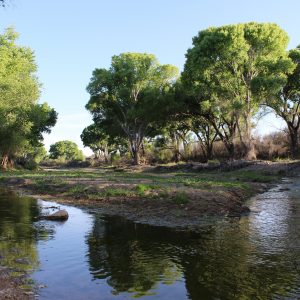The Stream, August 31: Water Pollution Puts Millions At Risk From Disease
The Global Rundown
Rivers and lakes polluted with bacteria and other disease-causing organisms are putting millions of people at risk in Africa, Asia, and Latin America, according to the United Nations Environment Program. The deadly tailings dam failure at Brazil’s Samarco mine last year was caused by poor drainage and design flaws, an investigation found. Technology-based livestock insurance could drastically reduce the effect of chronic droughts in Kenya. Chile’s largest electric utility is abandoning plans for a number of proposed hydropower projects. A report on flood defenses in the United Kingdom is still pending, leaving some lawmakers worried it won’t be ready before winter.
“I am confident that with insurance and the related complementary services, the boom and bust cycle will come to an end.” –Andrew Mude, a Kenyan scientist and winner of the 2016 Norman Borlaug Award for Field Research and Application, expressing confidence that his country’s devastating cycle of drought and food insecurity will improve rapidly over the next decade. Mude led efforts to use technology to assess forage availability and provide insurance payouts to livestock farmers before their herds die from hunger during droughts. (Reuters)
By The Numbers
323 million people Number at risk in Africa, Asia, and Latin America from waterborne diseases related to the pollution of surface waters. Approximately half of the rivers in Asia, a quarter of rivers in Latin America, and between 10 and 25 percent of rivers in Africa are contaminated by pathogen pollution, according to a report by the United Nations Environment Program. Reuters
6 hydroelectric projects Number the largest electric utility in Chile is no longer pursuing, stating that it will only go forward with projects that are “technically and economically viable and that are embraced by the local communities.” Reuters
Science, Studies, And Reports
The failure of the Samarco mine tailings dam in Brazil was caused primarily by an increase in the height of the dam, which led to more pressure on the walls and their eventual collapse, according to a report commissioned by the mine’s owners. The dam’s collapse last November sent a flood of tailings downstream, killing 19 people and polluting the Rio Doce. Reuters
On The Radar
As winter approaches, lawmakers in the United Kingdom are urging the government to finish its review of the nation’s flood defenses following severe and widespread damage caused by storms last December. The report was originally expected in July, but may not be ready until the end of September. Guardian
A news correspondent for Circle of Blue based out of Hawaii. She writes The Stream, Circle of Blue’s daily digest of international water news trends. Her interests include food security, ecology and the Great Lakes.
Contact Codi Kozacek





